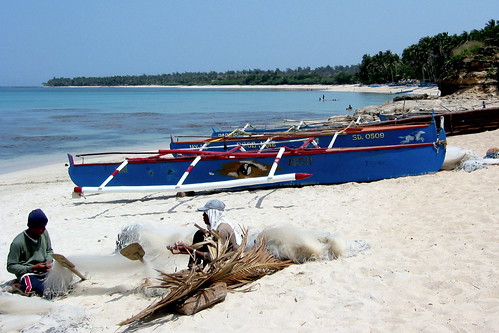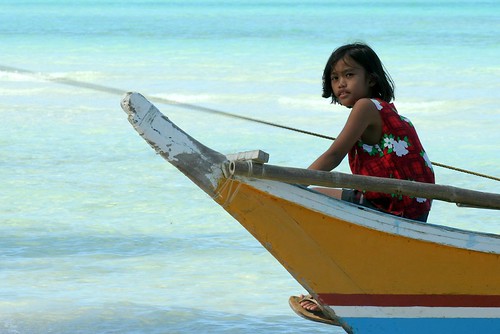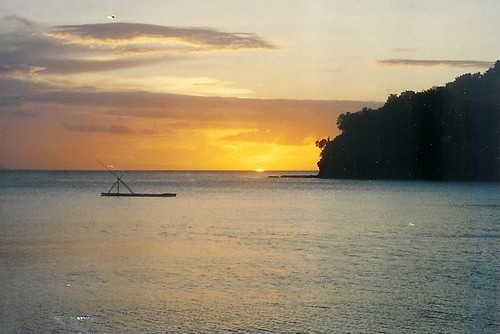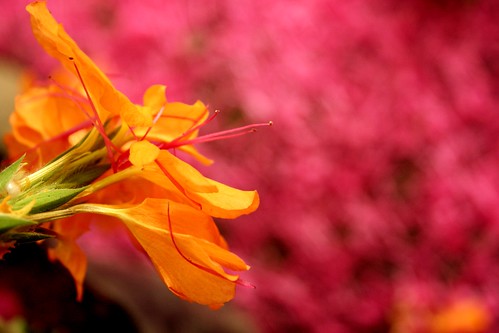the Church of Santiago in Dapitan
The Spaniards reigned over the Philippines for 333 years so it is expected that Spanish vestiges endure in Philippine society to this very day. However, no influence appears stronger than the Roman Catholic religion which today is still practiced by about 80% of the population. All throughout the archipelago, the Spanish occupation left behind hundreds of churches. Not surprisingly, Spanish era churches are densely crammed in Luzon and the Visayas, where Spanish administration was largely uninterrupted. However, only a few are scattered in most of Mindanao, especially deep in the south, which hitherto, was dominated by Islam.
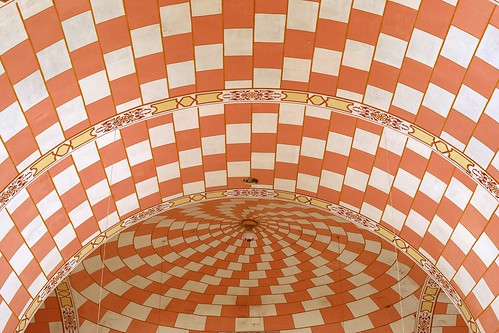
Canon EOS 350D Digital, 1.0s, f/8.0, 37mm, ISO 100
One of the handful of churches in Mindanao is the Church of Saint James in Dapitan, Zamboanga del Norte. Located in the outlying shores of northwestern Mindanao, Dapitan originally was and appendage of the Diocese of Cebu that was given to the Jesuits to administer in >1598. They took the mission of converting the Subanen, the original inhabitants at the time in Dapitan. When the Jesuits were expelled from Spanish lands in 1768, the Augustinian Recollects took over the parish of Dapitan but the Jesuits eventually were allowed to return to the Philippines. In 1870, they came back to Dapitan and in 1883, a stone church was built in the southeastern corner of the town plaza.
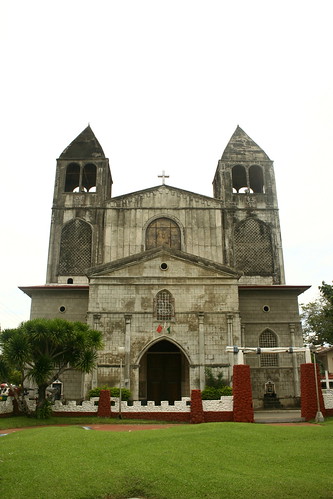
the façade of the Church of Santiago, Dapitan City, Zamboanga del Norte, the Philippines
Canon EOS 350D Digital, 1/160s, f/8.0, 18mm, ISO 100
Because of its proximity to the Muslim stronghold of Sulu, Dapitan was raided frequently by pirates so the the Jesuit missionaries chose James the Apostle as their patron saint. It was the saint’s apparition who helped the Spanish won over the Moors in the Battle of Covadonga so the >belief was that Dapitan would be so protected.

the statue of St James (Santiago) in the church of Dapitan
Canon EOS 350D Digital, 0.6s, f/5.6, 55mm, ISO 100, +1/3EV

Canon EOS 350D Digital, 1/20s, f/5.6, 18mm, ISO 400
Less than a decade after the church was erected, Dapitan inadvertently figured out in Philippine history when Dr. Jose Rizal, the leader of the progandist movement against Spain was exiled to the sleepy town.
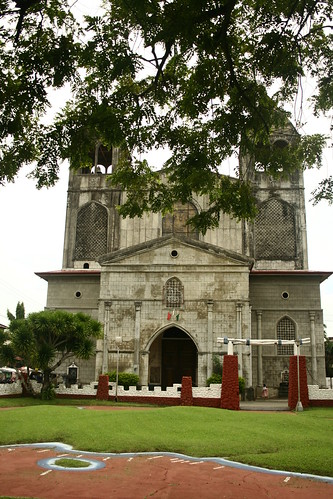
the town plaza fronting the church features the famous cut-grass relief map of Mindanao made by Jose Rizal
Canon EOS 350D Digital, 1/400s, f/4.0, 22mm, ISO 100
Ever the quintessential Renaissance Man, Rizal spent his four years modernizing Dapitan. He opened a school for children and a hospital, built a water system, helped in the town planning, made a relief map of Mindanao for the plaza and pursued studies in entomology, botany, linguistics, agriculture and engineering. Oral mythology has it that he even designed the altar of the Jesuit church of Santiago although there is no prove or disprove this belief.

the altar of the Church of Santiago, Dapitan City
Canon EOS 350D Digital, 1.3s, f/8.0, 21mm, ISO 100
As stone churches go, the Church of St. James is of typical 19th century Baroque design. There are two bell towers at the side, joined and accessible through a choir loft at the second level over the main entrance. Construction is mainly of hardwood, mortared stone and sand, with statuaries and glasses imported from Europe. The church is also laid out like a cross.
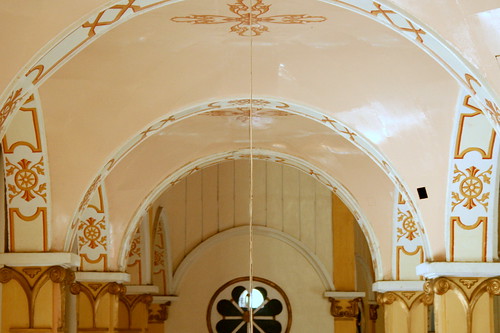
Canon EOS 350D Digital, 1/25s, f/5.6, 54mm, ISO 800
But the ceiling is unusual. The nave, transept and chancel have arched ceilings that are painted with a swirling pink and white checkered patterns. Try as you might, your eyes are just drawn upwards. From any angle, the domed ceiling design seems to be one flashy mesmerizing device, as if it came out of a page of an Escher sketchbook. Maybe this is how the church has been envisioned right from the start- to move, to captivate, to convince.

the ceiling, as shot from the choir loft
Canon EOS 350D Digital, 6.0s, f/16, 50mm, ISO 100, +1/3EV






